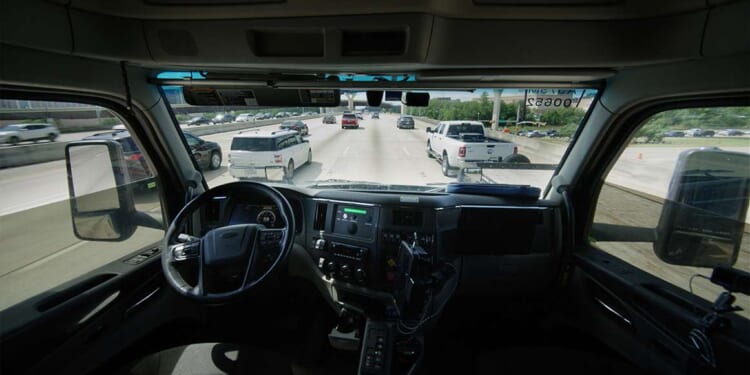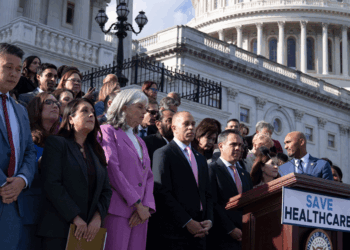On a lonely stretch of Texas interstate between Dallas and Houston, the possible future of freight transportation is already rumbling down the road. But whether autonomous trucking becomes commonplace might depend on federal regulations that govern stationary trucks, rather than those that are on the move.
Aurora Innovation Inc. became the first company to put heavy-duty commercial self-driving trucks on public roads when it launched its Dallas-to-Houston route in May. The company hopes to expand its routes to El Paso, Texas, and Phoenix by the end of the year. Aurora claims that its self-driving system can see objects that are as far as three football fields up the road, even if there are other cars in the way and even in the pitch black of a rural Texas night.
Autonomous trucking could help lower shipping costs and ease the shortage of long-haul truck drivers. Unlike human drivers, who are required to take a 10-hour break for every 14 hours on the road (during which they can drive only for a maximum of 11 hours), Aurora’s trucks can move goods around the clock.
An obscure federal rule is slowing the self-driving revolution. When trucks break down, operators are required to place reflective warning cones and road flares around the truck to warn other motorists. The regulations are exacting: Within 10 minutes of stopping, three warning signals must be set in specific locations around the truck.
Aurora asked the federal Department of Transportation (DOT) to allow warning beacons to be fixed to the truck itself—and activated when a truck becomes disabled. The warning beacons would face both forward and backward, would be more visible than cones (particularly at night), and wouldn’t burn out like road flares. Drivers of nonautonomous vehicles could also benefit from that rule change, as they would no longer have to walk into traffic to place the required safety signals.
In December 2024, however, the DOT denied Aurora’s request for an exemption to the existing rules, even though regulators admitted in the Federal Register that no evidence indicated the truck-mounted beacons would be less safe. Such a study is now underway, but it’s unclear how long it will take to draw any conclusions.
Both the courts and Congress have a chance to speed things along. In January, Aurora filed a lawsuit in federal court that seeks to overturn the DOT’s denial of its exemption request. The complaint calls the decision “arbitrary, capricious,” and an abuse of federal regulators’ discretion.
Meanwhile, Rep. Vince Fong (R–Calif.) has introduced a bill to allow truck-mounted warning beacons as “a permissible warning device,” among other changes meant to get more autonomous trucks on the road. Autonomous trucking’s expansion shouldn’t be stifled by federal regulators’ reluctance to embrace innovations in road safety.

















